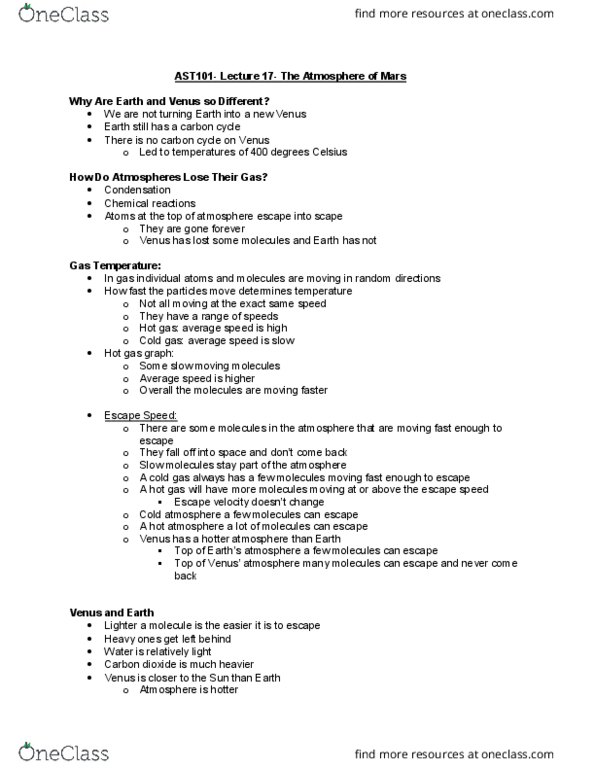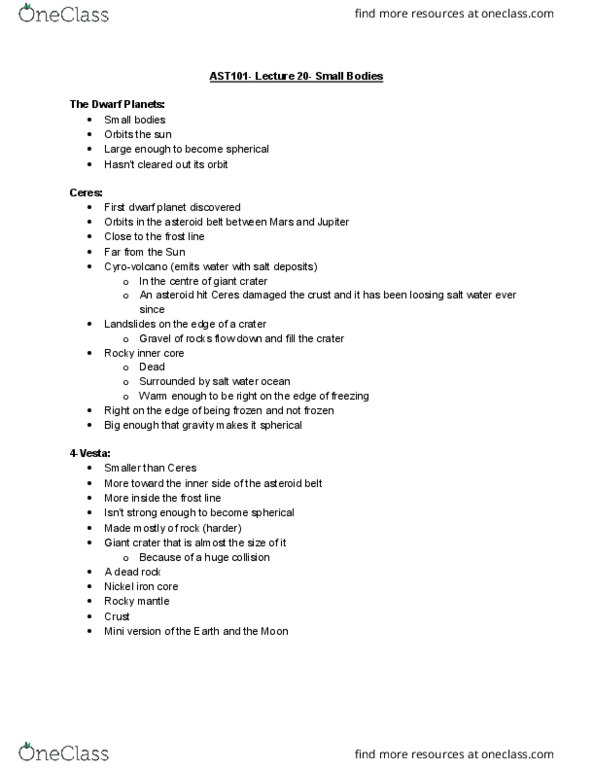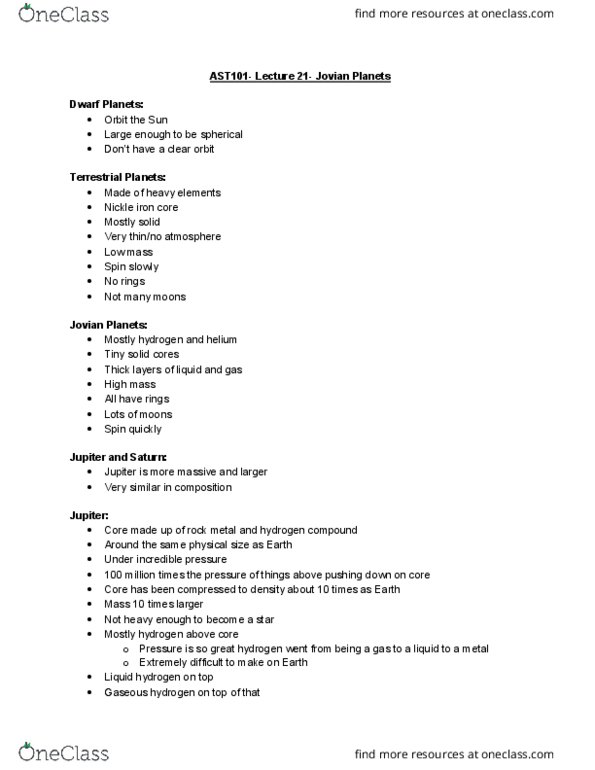AST101H1 Lecture Notes - Lecture 20: Minor-Planet Moon, Oort Cloud, Planetesimal
AST101H1 verified notes
20/26View all
Document Summary
The dwarf planets: small bodies, orbits the sun, large enough to become spherical, hasn"t cleared out its orbit. Ceres: first dwarf planet discovered, orbits in the asteroid belt between mars and jupiter, close to the frost line, far from the sun, cyro-volcano (emits water with salt deposits) 4-vesta: smaller than ceres, more toward the inner side of the asteroid belt, more inside the frost line, made mostly of rock (harder, giant crater that is almost the size of it. Isn"t strong enough to become spherical: because of a huge collision, a dead rock, nickel iron core, rocky mantle, crust, mini version of the earth and the moon. Asteroids: orbit the sun, not large enough to be spherical, asteroid ida has its own asteroid moon- dactyl, force of gravity is small. Meteor: travel fast with a plasma trail, sometimes asteroids hit the earth, atmosphere slowed it down.




